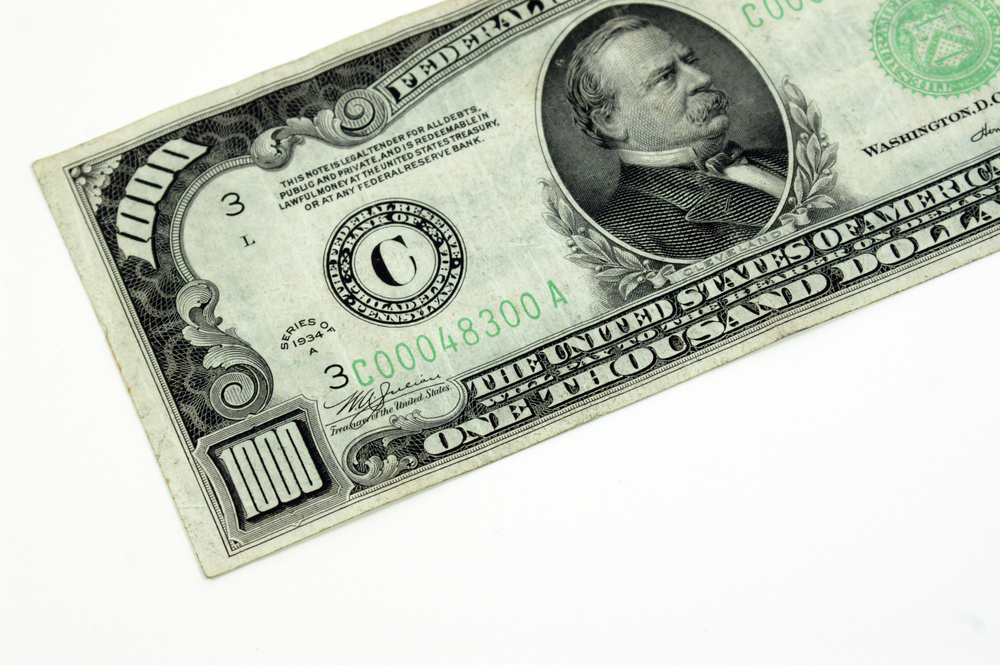At one time there were $1,000, $10,000 and even $100,000 notes in circulation. Yet today in most countries the highest denomination is somewhere between $100 and $500. However, if things are more expensive today than ever before why are we moving to smaller denominations instead of larger ones. Should we bring back the $1,000 note?
The simple answer is no. $1,000 and higher notes were brought in during totally different times to carry out large financial transactions. Today we simply don’t need them. These large denominations were removed by most western countries in the 60s and 70s. The main reason cited at the time was the dangers of counterfeiting. Even today if you go to a shop with a $100 bill it faces a lot more scrutiny than your average $5 note.
A better explanation is the cost of printing. For every different note made a new cast must be created. The cost of the cast is very expensive but if you print hundreds of thousands of $1 notes it is very low per note produced. However, if you make a cast for a $1,000 note and only produce a small number of notes than the actual cost to make that note is too high meaning the government is losing money every time it issues one.
The other reality is that today’s financial market is very different. Large transactions are usually not conducted with cash. We have credit cards and online banking to facilitate large transactions and so large denominations of cash are not required.
The only way we could see large notes return to modern economies is if there were serious issues with inflation or depreciation. If the currency became worth so little that it cost $10,000 to buy a carton of milk then we may see some strange notes in circulation. Zimbabwe is a good example. The country has a $100 trillion note, but it is worth just 40 cents in US money.





